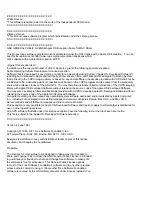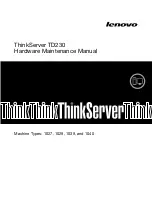
88
Upgrade and Maintenance Manual
BX920
S4
Basic software procedures
©
c
o
gn
ita
s.
G
e
se
lls
ch
ft fü
r T
ech
n
ik
-D
o
ku
m
en
ta
tio
n
m
b
H
2
0
14
Pf
a
d:
C
:\P
ro
g
ra
m
m
e
\F
C
T
\ti
m
_a
pp
\ti
m
_l
oca
l\w
or
k\PI
C
H
O
L\
O
B
J_
D
O
KU
-1
9
86
8-
00
1.
fm
After replacing the defective module(s) the memory operation mode is
automatically reset to its original state. It is recommended to verify that the
operation mode has been correctly.
Ê
Open a virtual console for your server blade as described in section
"Launching a video redirection to a server blade" on page 63
Ê
Switch on or restart your server blade.
Ê
As soon as the startup screen appears, press the
[F2]
function key to enter
the BIOS.
Ê
Select the
Advanced
menu.
Ê
Under
Memory Status
verify that none of the memory modules are marked as
Failed
.
Ê
Save your changes (if applicable) and exit the BIOS.
I
For detailed information on how to access the BIOS and modify settings,
refer to the "D3142 BIOS Setup Utility for PRIMERGY BX920 S4"
reference manual.
5.2.11 Verifying the system time settings
I
This task only applies to Linux environments.
After the system board has been replaced, the system time is set automatically.
By default, the RTC (Real Time Clock) time standard is set as the local time.
If a Linux OS is used and the hardware clock has been configured as UTC
(Universal Time, Coordinated) in the operating system, the BMC local time may
not be mapped correctly.
Ê
After replacing the system board, ask the system administrator whether the
RTC or UTC time standard is to be used as system time.
I
If the system time (RTC) is set to UTC, the SEL (System Event Log)
time stamps may differ from the local time.
Ê
Open a virtual console for your server blade as described in section
"Launching a video redirection to a server blade" on page 63
Ê
Switch on or restart your server blade.
Ê
As soon as the startup screen appears, press the
[F2]
function key to enter
the BIOS.
















































